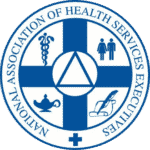You won’t understand the idea of the mission until you work at a Federally Qualified Health Center (FQHC). These organizations serve as a needed resource for underserved populations in rural and urban communities around our nation. This article will give you a sense of what it’s like to work in one of these important organizations that truly understand the mission of healthcare; to serve the people that need help the most.
Understanding the FQHC Mission
FQHCs are vital resources in a community. These organizations must meet specific criteria to qualify for the federal designation and are highly regulated to receive funding to provide care to underserved populations. FQHCs are non-profits and governed by a board that includes members of the community in which they serve. The mission of these organizations, mandated by the federal government, is to provide care to everyone regardless of their ability to pay for the service.
FQHCs offer services on a sliding fee scale and offer comprehensive services, from dental and prenatal care to wellness programs. These healthcare facilities often integrate primary care, optical, behavioral health, dental, pharmaceutical, and substance abuse services. These clinics serve more than 28 million people each year.
Benefits of Working in an FQHC
Doctors that work in FQHCs can receive loan repayment by working in these facilities, which makes them very attractive to the clinician just leaving residency. Another benefit is that they can receive malpractice benefits through a federal program. They also don’t have the same oversight and staff management responsibility found in other facilities.
But the day-to-day work in an FQHC is simply more fulfilling than the typical practice. Most FQHC patients fall well below the poverty line and are underinsured or uninsured. Without the FQHC team, these patients would fall through the cracks. It’s also highly unlikely they would receive preventative treatment.
By working in an FQHC, clinicians experience the satisfaction of treating patients that desperately need their help. These patients may have several chronic conditions and the FQHC doctor or midlevel will gain a high level of experience quickly when working one-on-one with these patients.
Doctors serving in an FQHC do not have the normal worries about reimbursement or other administrative tasks normally associated with traditional healthcare. These patients need help, and many do not have insurance. It places clinicians back where they belong at the center of care unencumbered by some of the worries about insurance reimbursement.
The FQHC offers tremendous resources for patients. If a clinician sees a patient for a primary care encounter and discovers they have a toothache, there can also be dental care available within the FQHC. This is very satisfying for a doctor used to the siloed traditional healthcare paradigm. Instead of referring a patient to a remote specialist, many conditions can be handled in-house at the FQHC.
Most doctors still go into healthcare to help people. Working at an FQHC is the one place where you can make a tremendous impact on the lives of patients. It’s a great opportunity to learn and grow while making a difference.
Talk to the executive recruiters at UHC Solutions to understand the kind of healthcare opportunities that are available and how we can help.









